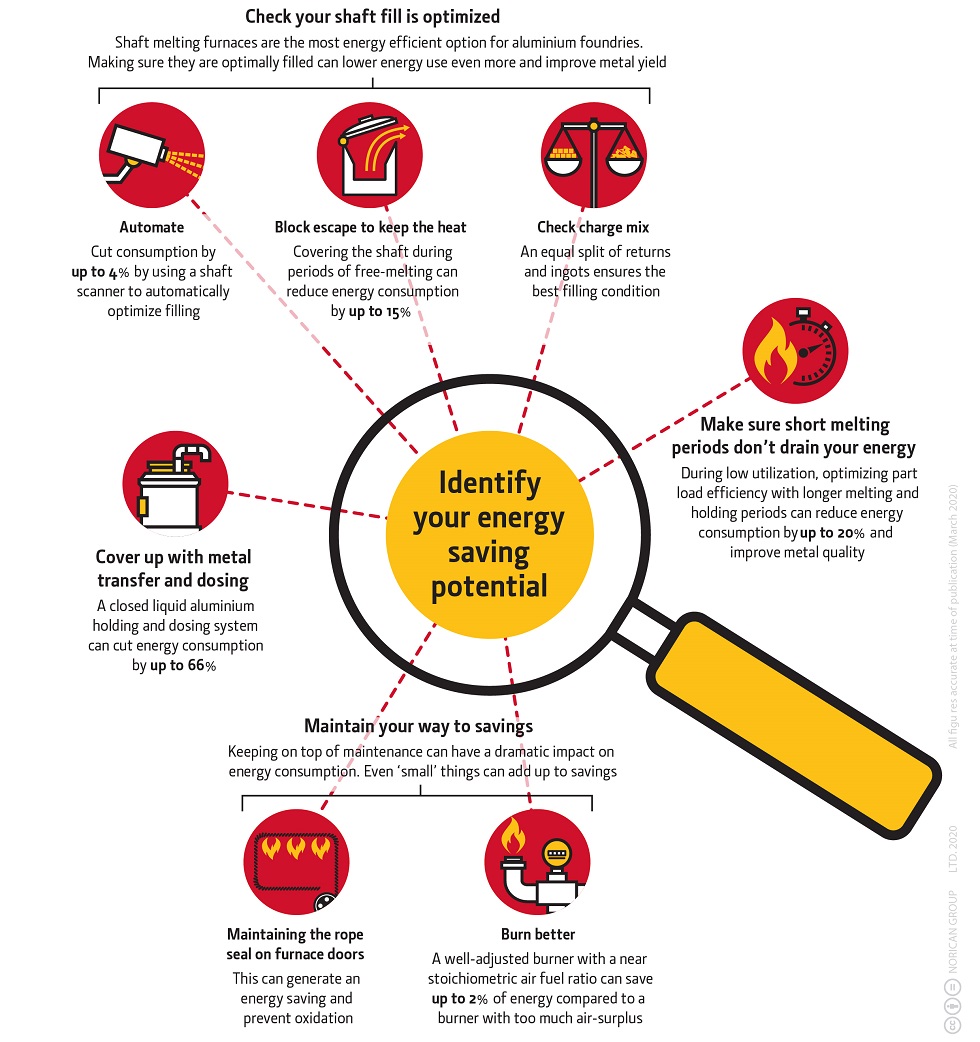Watching your weight:
One particular data set which can prove very revealing is to use furnace load cells to track the weight of charged material going into the furnace or the weight of liquid aluminium coming out and overlay this with energy used during the same time frame. The resulting information will help quickly identify sub-optimal performance which may well be caused by in-efficient filling and material distribution (see point 2).

